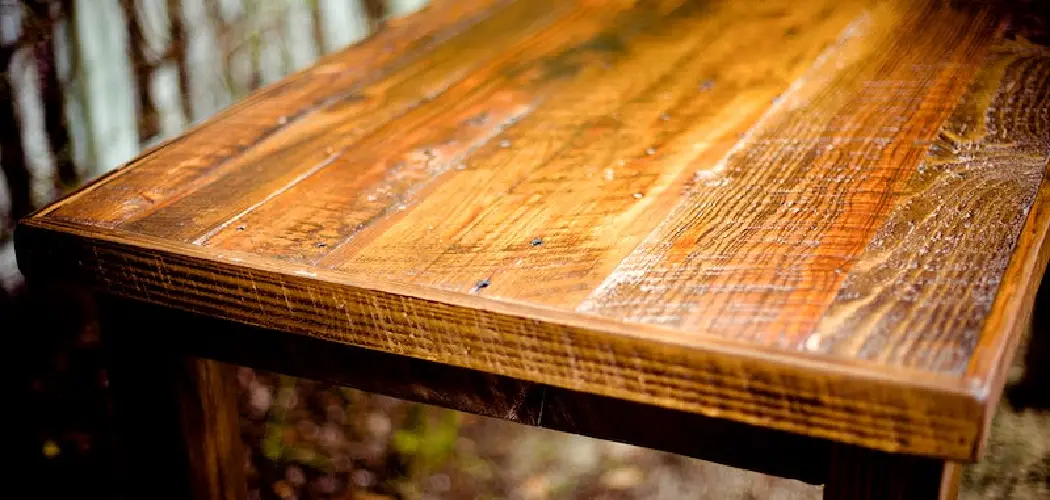Removing varnish from wood with vinegar is an effective and environmentally friendly way to restore the natural beauty of wooden surfaces. Varnish, a protective finish, can become damaged or deteriorate over time, necessitating removal. This article explores the steps for how to remove varnish from wood with vinegar.
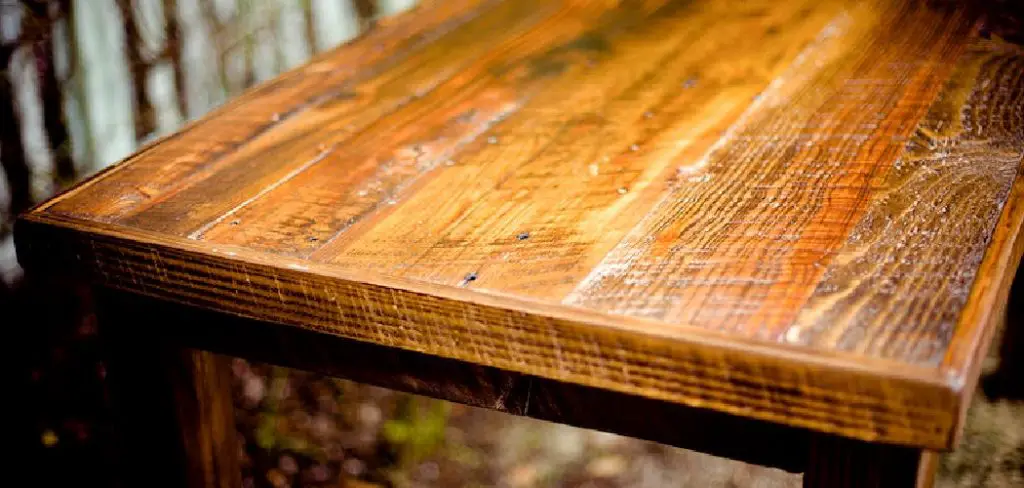
The mild acidity of vinegar helps to break down the varnish, making it easier to scrape off. By applying a vinegar solution and allowing it to sit on the varnished surface for around 20 to 30 minutes, you can begin the process of varnish removal.
Depending on the thickness of the varnish, you may need to repeat this process several times. Whether you’re rejuvenating old furniture or preparing wood for refinishing, this method offers a natural and non-toxic approach to stripping varnish and revealing the wood’s original luster.
The Need to Remove Varnish from Wood Surfaces
There are many reasons why one might want to remove varnish from wood surfaces. Over time, the varnish can become discolored or chipped, making the wood appear worn and unattractive.
A new coat of varnish or alternative type of finish may also be desired to change the look or feel of a piece of furniture or flooring. Regardless of the reason, knowing how to remove varnish from wood can be a useful skill for any do-it-yourself enthusiast or homeowner.
Chemical Strippers vs. Natural Methods
There are several methods available for removing varnish from wood surfaces. Chemical strippers are commonly used and can effectively dissolve the varnish, making it easier to scrape off. However, chemical strippers contain harsh chemicals that can be harmful to inhale and may damage surrounding areas if not used carefully. For those who prefer natural methods, vinegar can be a great alternative for varnish removal.
The Effectiveness of Vinegar
Vinegar is an acidic substance that has been used for centuries as a cleaning agent due to its ability to dissolve and remove dirt, grime, and stains. When it comes to varnish removal, vinegar’s acetic acid content makes it highly effective in breaking down the finish. While it may take longer than chemical strippers, the results are often comparable without the added chemicals.
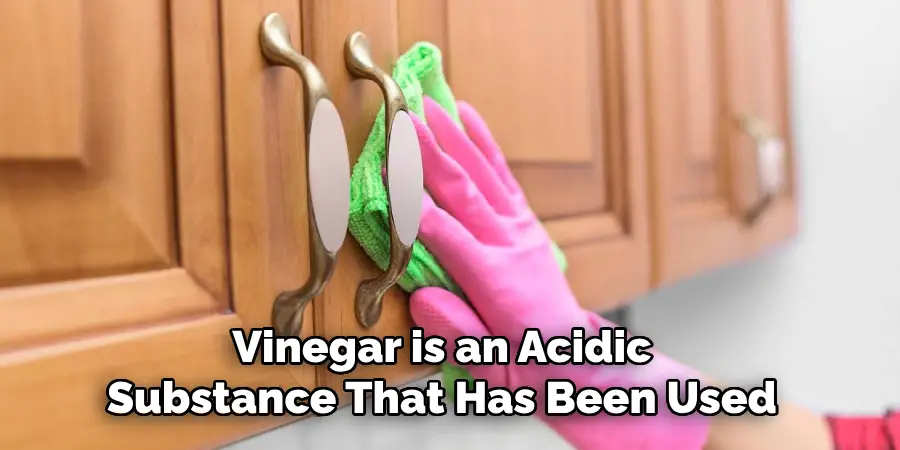
10 Methods How to Remove Varnish from Wood with Vinegar
1. Safety First
Before attempting to remove varnish from wood with vinegar, it is important to take the necessary safety precautions. Wear protective gloves and eyewear, as well as a respirator mask to avoid inhaling any fumes that may be released during the process. Make sure the area is well ventilated and free of any open flames or sparks.
2. Prepare the Area
Before beginning the process of removing varnish from wood with vinegar, it is important to prepare the area. Cover any nearby surfaces with a drop cloth or newspaper to protect them from spills or splatters of vinegar. Place a fan in the room to help circulate air and reduce odors.
3. Mix Vinegar and Water
Mix equal parts white vinegar and warm water in a bucket or container large enough to hold all of the pieces of wood you plan on treating. Stir until completely combined and then submerge all of the pieces into the solution for at least one hour, stirring occasionally if needed.
4. Remove Varnish
Once all of the pieces are submerged in the solution, use a scrub brush or steel wool pad to gently scrub away any remaining varnish from each piece of wood. Be sure not to apply too much pressure when scrubbing, as this could damage the wood itself. Rinse off each piece with clean water after scrubbing off all of the varnish residue.
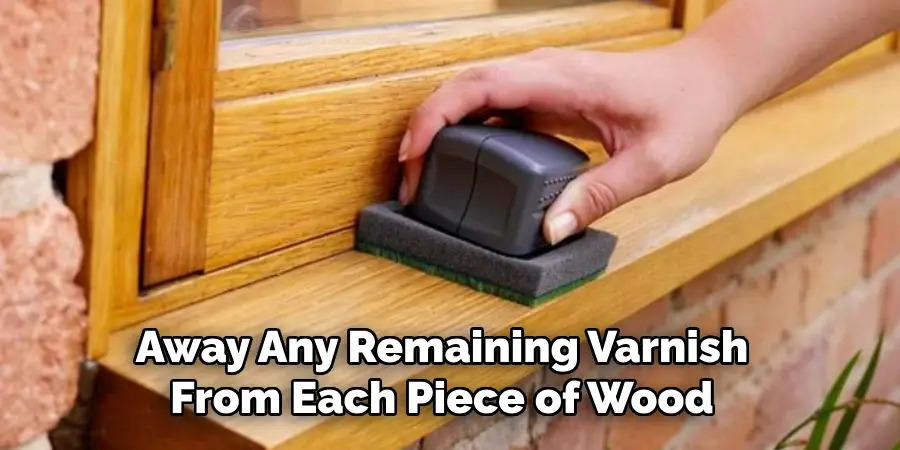
5. Dry Wood
Once all of the pieces have been rinsed off, dry them using an old towel or rag before proceeding further in order to prevent mold growth and discoloration due to moisture being trapped underneath any remaining varnish residue on each piece of wood. Allow them to air dry completely before moving on to step six if possible; otherwise, use a hairdryer on its lowest setting for quicker drying time if needed.
6. Sandpaper
Once all pieces are completely dry, use sandpaper or an electric sander (if available) to lightly sand down each piece in order to smooth out any rough edges left behind by removing varnish from the wood with the vinegar solution earlier in step four above. start with lower grit sandpaper (such as 80-grit) first before progressing up to higher grits (like 120-grit).
7 . Wipe Down Wood Pieces
After sanding down each piece, wipe them down using a damp cloth in order to remove any remaining dust particles left behind by sanding; this will help ensure that no dust particles remain that could interfere with staining or finishing later on down the line if desired by the user for their project(s).
8. Apply Stain/Finish (Optional)
If desired by users for their project(s), they can now apply either stain/dye or finish/sealant onto each piece after wiping it down; this will help protect it against future damage while also adding color/style depending on the type chosen by the user for their project(s).
9. Let Dry Completely
Allow each piece to be treated with stain/finish (if applicable) above the time needed for complete drying according to instructions provided on the product’s label before continuing further; usually takes anywhere between 24-48 hours, depending on the type used & humidity levels present at the time applied so patience is key here!
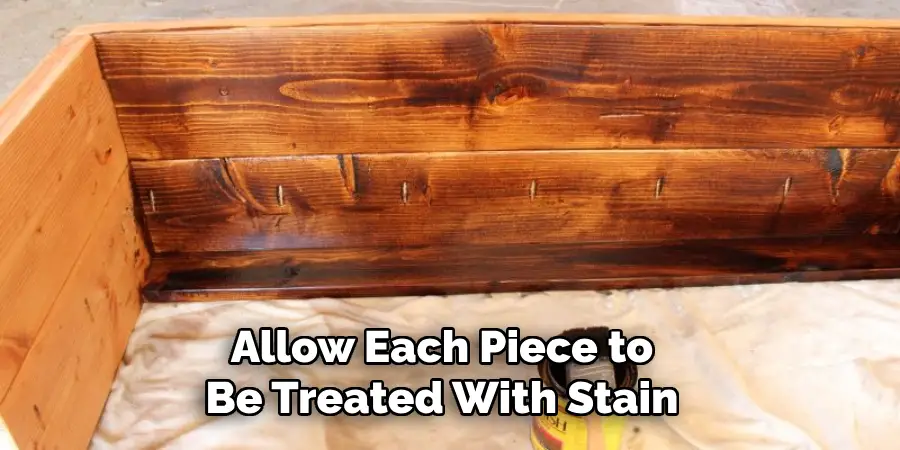
10. Enjoy Your Finished Project!
Now that everything has been completed regarding removing varnish from wood with the vinegar method outlined above—it’s time for the user(s) involved in the project(s) to enjoy their finished product & admire how beautiful it looks!
Things to Consider When Remove Varnish from Wood with Vinegar
When it comes to removing varnish from wood with vinegar, there are a few things you should keep in mind before starting the process. These considerations will ensure that the removal is done effectively and without causing any damage to your wood surface.
First and foremost, it is important to choose the right type of vinegar for the job. White distilled vinegar or apple cider vinegar are typically recommended for removing varnish from wood. They have a high level of acidity that helps break down the varnish without being too harsh on the wood itself.
Next, you should test the vinegar on a small, inconspicuous area of your wood surface before attempting to remove all of the varnish. This will help you determine if the vinegar is suitable for your specific type of wood and if it will cause any discoloration or damage.
Additionally, make sure to wear protective gear such as gloves and eye goggles before starting the removal process. Vinegar, even in its diluted form, can still cause skin and eye irritation. It is also recommended to work in a well-ventilated area to avoid breathing in the fumes from the vinegar.
Before applying the vinegar, it is important to clean the wood surface thoroughly. This will help remove any dirt, debris, or wax buildup that may prevent the vinegar from effectively penetrating the varnish. You can use a mild soap and water solution or a wood cleaner specifically designed for removing varnish.
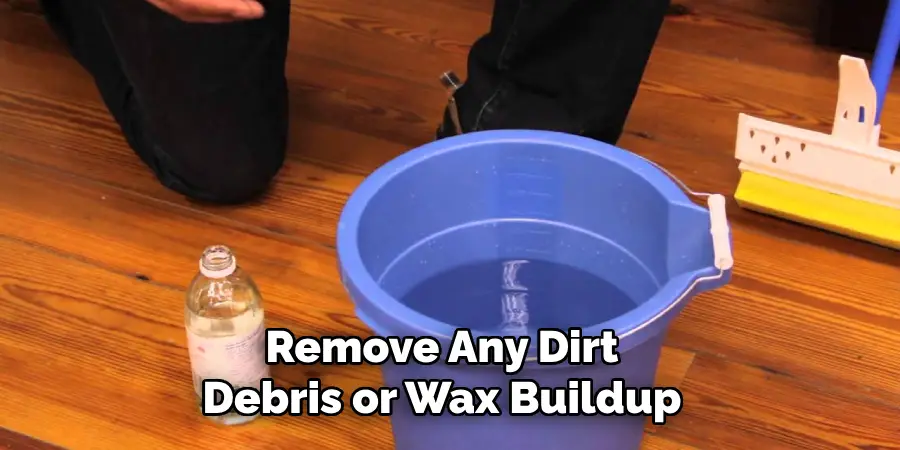
Once the surface is clean, you can begin applying the vinegar. Depending on the amount of varnish and its thickness, you may need to apply multiple coats of vinegar. Allow each coat to sit for a few minutes before wiping it off with a clean cloth or scrubbing it gently with a soft-bristled brush.
Common Mistakes to Avoid When Removing Varnish
Varnish is a popular choice for protecting and beautifying wood surfaces. However, over time, varnish can become dull, damaged or simply out of style. In these cases, removing the varnish is necessary to restore the natural beauty of the wood.
While using vinegar as a natural alternative to chemical strippers is a great idea, there are some common mistakes that people make when attempting to remove varnish with vinegar. In this document, we will discuss some of these mistakes and how to avoid them.
Using the wrong type of vinegar
Vinegar is a versatile ingredient that comes in different types and strengths. When it comes to removing varnish from wood, using the right type of vinegar is crucial. White distilled vinegar or apple cider vinegar are the most effective for this purpose due to their high acidity levels.
You should avoid using balsamic or red wine vinegar as they have lower acidity levels and may not be strong enough to remove varnish effectively. It is important to read the label of the vinegar you are using and ensure it has a high acidity level for best results.
Not testing on a small area first
Before diving into removing varnish with vinegar, it is important to do a test patch on a small inconspicuous area. This will help you determine whether or not the vinegar is effective in removing varnish from your specific type of wood.
Some types of wood may react differently to vinegar, and without doing a test patch, you may end up damaging the surface of your furniture or flooring. It is always better to be safe than sorry when dealing with natural ingredients.
Not using the correct ratio of vinegar to water
Vinegar is highly acidic and can cause damage if used in its pure form. That’s why it is important to dilute it with water before using it on wood surfaces. The correct ratio for removing varnish with vinegar is 1 part vinegar to 3 parts water.
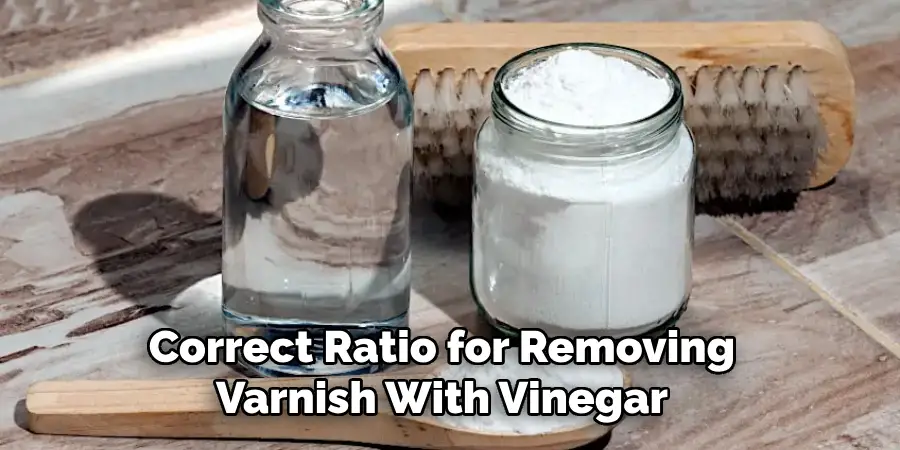
This ensures that the acidity level is balanced and safe enough to use without causing any harm to your wood. Using too much vinegar or not diluting it properly can result in discoloration, warping or even breaking down the wood fibers.
Conclusion
Now you are armed with all the knowledge you need to tackle your varnishing removal task like an expert! Don’t forget if it’s a big job that it might be best to consult a professional before getting stuck in – their experience could save you a lot of hassle and stress. Whatever your approach, just remember to be careful and follow proper safety protocols when removing varnish from wood with vinegar.
With the right information and the correct products at hand, anyone can take on this project with confidence. So don’t put it off any longer – now is the time for you to take charge of your project and learn how to remove varnish from wood with vinegar!

